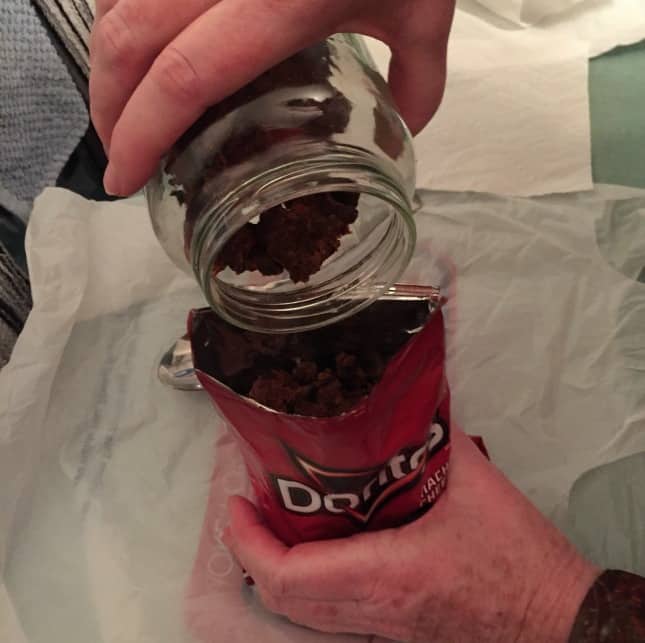Introduction
Before the “Reduce, Reuse, Recycle” movement, we had “Use it up, make it do, or do without”. Such lessons in frugality may also be applied to lightweight backpacking. In some cases, the result is better than the ‘original’. This is one of them: vacuum sealing recycled mylar bags for backpacking food.
Like many other hikers, I dehydrate or assemble many of my own meals. Some of my backpacker friends complain that dehydrated tuna makes their packs smell like cat food, but those little, dried pieces of tuna can puncture the common plastic bag (aka ‘ZipLoc’R), encouraging the spread of food odors. Some other dried foods do the same. With an application of the “Reuse” philosophy, we can do a whole lot better.

The Mylar Snack Bag
Consider the MylarTM snack bag used for popcorn or chips. Notice how well it stops odor transfer, holds a cushion of air around that fragile food and prevents vapor transfer. And it can do this for years on end. Why not reuse it? I have been doing this successfully for more than 15 years.
A common Mylar bag is more puncture, vapor, and moisture resistant than that most store-bought ziplock-style plastic bags. It takes some effort to degrease bags that have stored fried chips, so baked or air-popped snacks make for easier clean up, but some hot water and baking soda added to my dish detergent usually does the trick to clean used Mylar snack bags. Then, a thorough rinse and an air dry gives me nearly free but highly reliable meal storage bags. If I am concerned that the food will pierce these tougher bags, I line them with a layer of paper, waxed or otherwise. An added plus is that the paper can be used for tinder, and if I have to carry that extra quarter-ounce, by golly, I am going to use it for something!
Technical Information on the Mylar Snack Bag
Mylar is a Trademark of Dupont Teijin Films. Melinex and Hostaphan are two other well-known trade names for this plastic. It is really a thin, stretched film of polyethylene terephthalate (PET). PET is also used to make the well-known “rocket-base” bottles for fizzy drinks.
Member Exclusive
A Premium or Unlimited Membership* is required to view the rest of this article.
* A Basic Membership is required to view Member Q&A events




Home › Forums › Vacuum-Sealed Recycled Mylar Bags for Backpacking Food Packaging: Better than ZipLocs